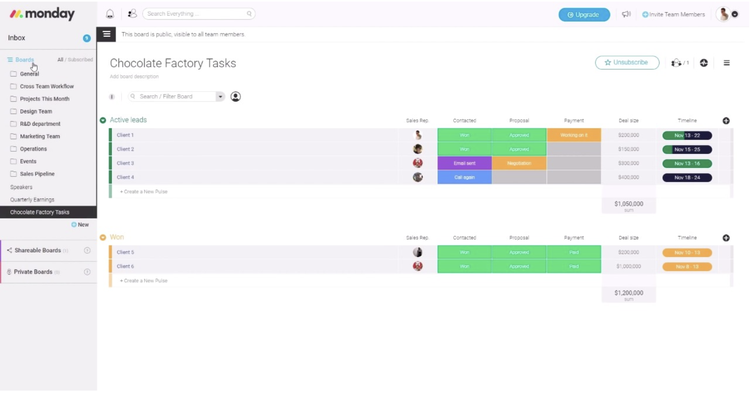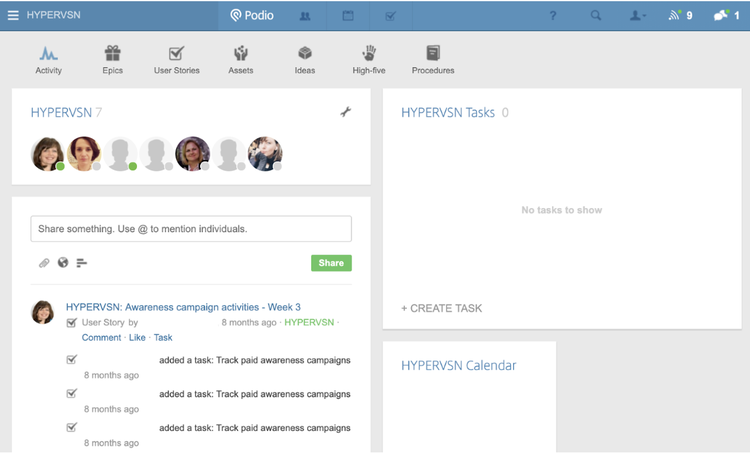The process of project management is a difficult one to master, and perhaps the one aspect of it that flummoxes managers the most is project scope. Creating a project charter or mapping out your project schedule all seem a lot more straightforward and easier to do compared to laying out the scope.
But it’s a mistake to not put enough time and effort into the project scope. One Harvard study found that the average project overran its budget by 27%. If you want to avoid doing the same, you need to spend a lot of time on the scoping process so you aren’t surprised later.
If you know it's time to tackle the project scope, here's how you can put sound project management principles to work and produce one that will make the project a resounding success.
Overview: What is project scope?
Project scope refers to the list of project goals, deadlines, and tasks. The project scope is often detailed in a document called a scope statement or statement of work.
By laying out a project scope in a document, you provide the entire team with a guide on all facets of the project, from the tasks to be completed to the resources needed to the goals to be achieved. The project scope can be widened if more needs to be accomplished than had been previously thought, and it can be narrowed if the project is too large for the team to tackle.
A project scope is an important part of project manager responsibilities, and it will help you stay on task and avoid project scope creep.
How to define project scope
It’s easy to say what a project scope is, but it’s not so easy to create a project scope document. It can have a lot of detail and moving parts, and it’s not something to take lightly. But if you break it down into five steps, the process becomes pretty straightforward.
Step 1: Define the goals
The first step of defining the project scope is to define the end product or goals -- also called “deliverables” -- of the project. You need to be crystal clear about what you hope this project will accomplish. It's a good idea to outline your goals using the SMART rule:
- Specific (the project scope states exactly what the project should achieve)
- Measurable (the goal is measurable not vague)
- Achievable (it is reasonable to believe the team could accomplish this goal)
- Realistic (it can be achieved relatively easily without going over budget)
- Timely (it can be achieved within the defined time frame)
Tips for defining the goals:
Defining goals is so important because it sets the tone for the rest of your project scope. Here are a couple of ways you can ensure you set the right goals.
- Be flexible: Sometimes goals may shift or change altogether over the course of the project, and that’s OK. For example, if your goal is to build a two-story home, and you have the option to build a porch if you come in under a certain budget, it’s OK to provide room for the scope to shift in accordance with your goals.
- Involve everyone: Goals should not be developed by one person; all stakeholders should weigh in and bring their own perspective, which may help you include things you missed, or avoid goals that shouldn’t be pursued.
Step 2: Define potential obstacles
The next step for effective project planning is to identify areas where your project may be derailed. What could threaten your project's budget? What could cause major delays?
For example, if you were building a small house, you might run into a problem with the weather, if there were twice as many rainy days as there usually are at that time of year, that might delay your progress. Or, perhaps the price of lumber goes up by 5% by the time you order a shipment.
Tips for defining potential obstacles:
Obstacles can be hard to predict, but chances are you already have a good idea of what’s most likely to go wrong with the project, so start with that and work outward.
- Leave nothing out: Write down every possible thing that could go wrong with the project.
- Have a plan: Draft a contingency plan laying out what you will do to mitigate the consequences for each obstacle, so you're prepared if it happens.
Step 3: Identify necessary resources
How much money will the project cost? What supplies are needed? How many man hours of labor will be required? All of these questions need to be answered in detail. You should do extensive research and come up with exact figures; educated guesses almost certainly will result in cost overruns that could derail the entire project.
Tips for identifying necessary resources:
An accurate accounting of resources will ensure that everyone has the tools they need to keep the project on schedule, so this is an important step.
- Be exhaustive: Even little costs can add up, so create a list of every possible thing you can think of that the project will need in order to succeed.
- Consult with others: Share the list you’ve created with other stakeholders in the project to see what they think and if you’ve left anything off the list.
Step 4: Provide a milestone schedule
Now that you’ve laid out the goals, obstacles, and resources, you can put together a general timeline of what you can achieve. It’s important to set aside specific milestones that will help everyone monitor the project’s progress.
For example, if you’re building a house, the first milestone might be to lay the foundation, the second could be to erect the structure’s framework, the third could be to install electrical and plumbing, and the fourth could be the completed house.
Tips for providing a milestone schedule:
Coming up with milestones is an important part of putting the project scope together. Once that is in place, you are almost finished, and it’s all about plan scope management from here on out.
- Attach dates to each milestone: It’s not good enough to simply have milestones, you also have to attach dates to them, or there is no sense of priority in your tasks and you risk not finishing the project in time.
- Have a contingency plan: If you miss a milestone, you need to have a plan in place on what actions you will take in order to achieve the next milestone on time.
Step 5: List the stakeholders
With your project's goals defined, it's now time to create a list of stakeholders. A stakeholder is anyone who has an interest or concern in the project. For a construction company, for example, that would include the chief executive officer, the chief financial officer, investors, and the construction manager.
List any and all individuals who should be in the loop on this project and have any significant responsibilities in making sure the project is executed.
Tips for listing the stakeholders:
It’s important to have an exhaustive list of all stakeholders, because if you miss anyone, it could have major ramifications on the project because tasks weren’t completed because of someone being left out.
- Go through the milestones: A good way to identify stakeholders is to go through every aspect of the project scope you’ve built out so far. Ask yourself what people are responsible for achieving each milestone, for acquiring each resource, and for overcoming each obstacle. This will help you avoid forgetting anyone.
- Attach stakeholders to elements of the plan: By assigning names to elements in the scope such as resources, tasks, and milestones, it is clear what everyone’s responsibilities are, which helps the project run smoother.
The best project management software for project scope management
Creating a project scope from scratch is a little bit daunting, but there are many software options out there that can guide you. Here are three of the best project management software options that are especially effective in helping you lay out a project scope.
1. monday.com
monday.com offers a task scheduler with prioritization, which helps you lay out the milestones, and a shared team calendar that allows you to involve all stakeholders. A resource management tool helps users track the project's resources.

You can view all tasks and the stakeholders they’re associated with via monday.com’s dashboard. Image source: Author
2. Podio
Podio also has task prioritization and scheduling features and an easy way to input new tasks by simply hitting "T" on the keyboard. It also has document storage, so you can keep the project scope on file, and reporting, so you can gather data on how well the project is doing.

Podio’s dashboard makes it easy to see project stakeholders and tasks. Image source: Author
3. Scoro
Scoro has custom fields to enable you to track and manage resources. It also has a task creation and list system that will allow you to manage your milestones, and you can tag relevant stakeholders. It also has document storage and file sharing, as well as budget reports and dashboards so you can watch the finances.

Scoro’s dashboard keeps all aspects of the project scope in one place. Image source: Author
It’s time to create your own project scope
Now that you know what all goes into creating a scope of work, it's time to start working on your own. Ask yourself these questions:
- What are the phases in my project life cycle?
- Do I already have a project scope statement that I can adapt and expand upon?
- How broad or how narrow should the scope of a project be, and have I conducted a project scope analysis yet to determine that?
- What is a scope knowledge area I need to address?
Set aside a few hours in the next week or two to sit down and go through the steps above. Look at a project scope example or two to see how others have done it. And then just get to work and draw one up.
Our Small Business Expert
We're firm believers in the Golden Rule, which is why editorial opinions are ours alone and have not been previously reviewed, approved, or endorsed by included advertisers. The Ascent does not cover all offers on the market. Editorial content from The Ascent is separate from The Motley Fool editorial content and is created by a different analyst team.